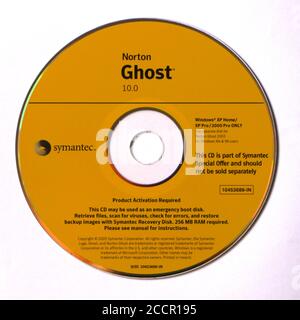
/ghosts-of-past-461628677-59a074be845b340011fd7b7d.jpg)
Whether you use a local hard drive or a network resource, plan on dedicating more than half the size of the source disk to the compressed image. Though Ghost 10 compresses data, you still need a suitably large backup destination to get the most out of the program. If you have a lot of media files on your drive partition, you could end up with large image files. That means you can't perform a daily backup of work documents to a DVD-R drive, for instance.

Unlike many backup solutions, Ghost provides no way to back up only specific folders or file types it backs up complete drive partitions only-ouch. Norton Ghost 10's complete image backup is both its greatest strength and its greatest limitation. It places an icon in the system tray and works seamlessly in the background, creating complete backups and incrementally updating those backups daily. Though Ghost can back up data to removable media, such as DVD-RW drives, it works best with an external or secondary internal hard drive.

#WHAT IS NORTON GHOST INSTALL#
When you first install Norton Ghost 10, a wizard guides you through the process of creating a backup schedule Ghost even scans your system and suggests locations to store the backup.
#WHAT IS NORTON GHOST UPGRADE#
Users of Ghost 9 will definitely want to upgrade to version 10. These make it a unique and powerful backup application, even for novice users. Norton Ghost 10's usability and feature enhancements include data encryption and better tools for managing backed-up data. Realizing this, Symantec has transformed Norton Ghost 10 from a mere disk utility into a general-purpose backup solution, clearly distinguishing it from Acronis True Image 9. However, with the advent of large, inexpensive, high-speed external hard drives, it's become an ideal way to create robust backups that can get you up and running quickly if disaster strikes. Disk imaging, a process that creates an exact copy of a hard disk's contents, used to be the exclusive domain of system administrators, programmers, and other techie types.


 0 kommentar(er)
0 kommentar(er)
